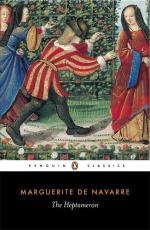1 One of these letters, written by her either to Philiberta of Savoy, Duchess of Nemours, or to Charlotte d’Orleans, Duchess of Nemours, both of whom were her aunts, may be thus rendered in English: “My aunt, on leaving Paris to escort the King, Monsieur de Meaux (Bishop Briconnet), sent me the Gospels in French, translated by Fabry, word for word, which he says we should read with as much reverence and as much preparation to receive the Spirit of God, such as He has left it us in His Holy Scriptures, as when we go to receive it in the form of Sacrament. And inasmuch as Monsieur de Villeroy has promised to deliver them to you, I have requested him to do so, for these words (the Gospels) must not fall into evil hands. I beg, my aunt, that if by their means God grants you some grace, you will not forget her who is above all else your good niece and sister, Margaret.” Fabry’s translation of the Gospels was made in 1523-24.
Margaret’s religious views frequently caused dissension between her and her husband, in whose presence she abstained from giving expression to them. Hilarion de Coste mentions that “King Henry having one day been informed that a form of prayer and instruction contrary to that of his fathers was held in the chamber of the Queen, his wife, entered it intending to chastise the minister, and finding that he had been hurried away, the remains of his anger fell upon his wife, who received a blow from him, he remarking, ‘Madam, you want to know too much about it,’ and he at once sent word of the matter to King Francis.”
It was at Nerac that most of the divines protected by Margaret found a refuge from the persecutions of the Sorbonne. Here she kept court in a castle of which there now only remains a vaulted fifteenth-century gallery formerly belonging to the northern wing. Nerac has, however, retained intact a couple of quaint mediaeval bridges, which Margaret must have ofttimes crossed in her many journeyings. Moreover, the townsfolk still point out the so-called Palace of Marianne, said to have been built by Margaret’s husband for one of his mistresses, and also the old royal baths, which the Queen no doubt frequented.
It was at the castle of Nerac that Margaret’s favourite protege, the venerable Lefevre d’Etaples, died at the age of one hundred and one, in the presence of his patroness, to whom before expiring he declared that he had never known a woman carnally in his life. However, he regretfully added that in his estimation he had been guilty of a greater sin, for he had neglected to lay down his life for his faith. Another partisan of the Reform, Gerard Roussel, whom Margaret had almost snatched from the stake and appointed Bishop of Oloron, had no occasion to express any such regret. His own flock speedily espoused the doctrines of the Reformation, but when he proceeded to Mauleon and tried to preach there, the Basques refused to listen to him, and hacked the pulpit to pieces, the Bishop being precipitated upon the flagstones, and so grievously injured that he died.




